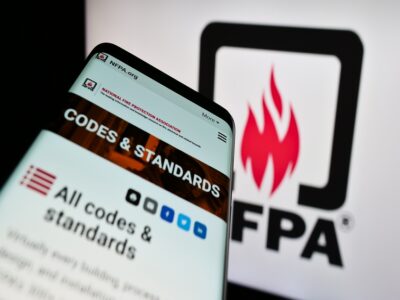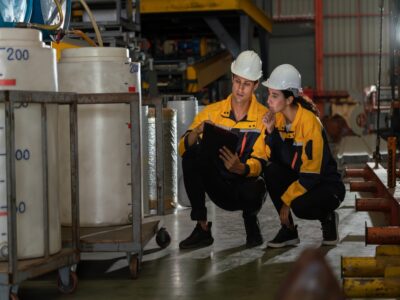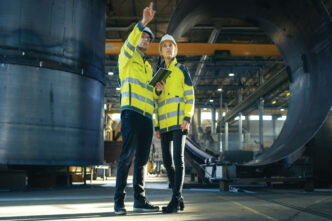
What is NFPA 484?
NFPA 484 is a technical standard that has been prepared to minimize the occurrence of, and resulting damage from, fire or explosion in areas where combustible metals or metal dusts are produced, processed, finished, handled, stored, and used. Its provisions are considered necessary to provide a reasonable level of protection from loss of life and property from fire and explosion.
Approach/ Content
To accomplish its stated objective, the standard follows an approach that is familiar to those who have worked with other NFPA standards that deal with combustible dusts.
Determination of Combustibility or explosibility of the metal dusts
Understanding the nature of the hazard you are dealing with is always important and the best place to start is to establish if your metal dust is combustible or explosible. At Stonehouse we have a suite of screening tests on offer that answer this first fundamental question. If then the powder is found to be combustible or explosible, we can go on to measure how easily it can be ignited and what the explosion effects could be. All essential data in ultimately deciding how to prevent dust explosion and fire – and how to protect against their effects.
Undertake a Hazard Analysis
The design of fire and explosion safety provisions at your facility should be based on a Hazard Analysis of the facility, the process, and the associated fire and explosion hazards. In NFPA 652, this hazard analysis is termed a DHA (Dust Hazards Analysis) – a formalized process that results in the preparation of a written document that is maintained and updated whenever necessary (e.g., as a result of change) but which must be reviewed and updated at least every 5 years. Specialist Hazard Analyses of this type should be performed by a suitably experienced process safety specialist, and this is a service that we at Stonehouse provide for our clients.
Fire prevention, protection, and emergency response
Fire prevention relies on control of combustible materials, proper storage, and housekeeping and NFPA 484 provides guidance on this. It also covers fire protection – a particularly important topic where metals are processed because of the auto-ignition possibility, and reactivity properties of some metals. Remember, water can cause metal oxidation and lead to the generation of hydrogen gas – with associate explosion risk. The need for regular inspection, testing, and maintenance programs is also required to ensure that process controls and equipment perform as designed and that a change in process equipment does not increase the hazard.
In general, automatic sprinkler protection should not be installed in areas where combustible metals are produced or handled – BUT there are permitted exceptions to this!
For emergency response to metal dust incidents, special measures are usually required as common extinguishing agents will often be ineffective. In general, water, foams, halon, carbon dioxide, and some other agents will not be effective in fighting metal fires and sometimes can aggravate a situation. Stonehouse is always happy to help in specifying suitable firefighting options for particular metal dusts.
Housekeeping and dust collection
NFPA 484 has sections that address the need to reduce dust escape and limit the extent of dust release as well as removal of dust – to dust collection systems. Fugitive dusts should always be avoided but the often inevitably escaped dust has to be regularly removed – and by means that do not generate dust clouds.
The standard also deals with the need for provision of explosion protection in equipment that can contain dispersed dust clouds. Dust collection units are examples of process plant that may contain dust clouds from time to time. Explosion relief vents are an example of explosion protection, but if these are to be installed, it is important that they are properly sized for the Kst value of contained dust and are located such that in the event of explosion, they would discharge to a safe place. Depending on the type of dust explosion precautions to be provided, NFPA 484 refers to other specialist standards such as NFPA 68 (Standard on Explosion Protection by Deflagration Venting), and NFPA 69 (Standard on Explosion Prevention Systems).
Control of sources of ignition
In line with most guides and standards that are designed to reduce dust fire and explosion risk, NFPA 484 addresses the elimination and control of sources of ignition on plant. It covers hot work, smoking, spark resistant tools, static electricity, grinding wheels, electric power and control, the need to classify electrical areas (Hazardous Area Classification) and powered industrial trucks. Th use of electrical equipment in areas where there are metal dusts presents an additional hazard when compared to many powders due to their high electrical conductivity. Metal dusts, if allowed to enter the body of electrical equipment, have the potential to cause short-circuit. This can impact on the IP specification of the electrical equipment.
Advice for specific metal dusts
NFPA 652 has sections that deal with the special fire and explosion prevention and protection measures for specific metal dusts. In particular, the standard has sections that individually cover alkali metals, aluminum, magnesium, niobium, tantalum, titanium, zirconium and others. These metals are commonly processed and handled and have subtly different properties (requiring specific safety measures).
How Stonehouse can help
At Stonehouse we have many years of cumulative experience in assessing dust explosion hazards and their control. IF you have a specific question or would like to talk about how Stonehouse can help you with interpretation or application of NFPA 484 or other process safety standards, please contact us on 609-455-0001 or email us at [email protected] or from our website: Contact Us.
References:
Ref 1: NFPA 484, Standard for Combustible Metals, Metal Powders, and Metal Dusts

Get in touch
To learn more about our expertise and services in dust explosion prevention & mitigation, call us at +1 609 455 0001 or email us at [email protected] today.
We also offer tailored virtual and in-company process safety training programs on Dust Explosions, Static Electricity and HAC (Hazardous Area Classification) and more. Find further information here.
* indicates required fields







